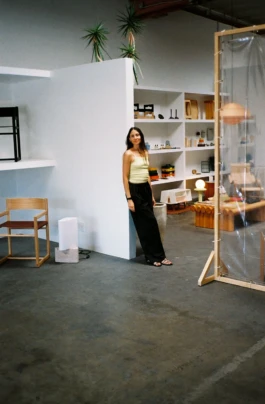

Open Spaces
Yara Akkari, originally from Lebanon, has blended her love for community, nature, and art into the world of publishing. From studying at the London School of Economics to starting Open Spaces magazine, Yara shares how her journey—including a decade in humanitarian work—drives her passion for bringing people together through creativity, storytelling, and Land Art, that ties the natural world to artistic expression.
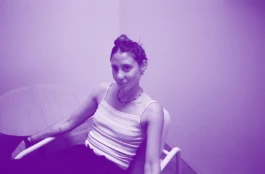
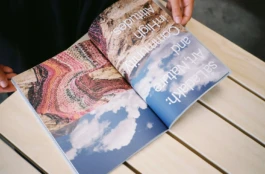
You’re a Lebanon native, so what are some of your fondest childhood memories?
My childhood was all about food and community. You never leave the table hungry—it’s just part of our culture to keep feeding you! Even now that I live abroad, I love bringing people together around a meal and making my home as welcoming as the one I return to in Lebanon.
How did you find your time in London while studying at the London School of Economics?
It flew by in a blur, to be honest! I really enjoyed the subjects I studied, from human rights to humanitarian and development studies. It felt like exactly what I wanted to learn, and I’d definitely do it again if I could. Being in London was fantastic—at that age, you’re all about the parties, and London definitely delivers on that front!
Your initial background is in renewable energy, specifically in developing countries, which you pursued for over 10 years. What are some of the key takeaways from that experience?
Those years were formative for me. They sparked my curiosity and pushed me to take on challenges and explore new places. Working in countries like Haiti, Uganda, Kenya, Ethiopia and India, and having significant responsibilities at a young age, was incredible. It’s a bit nostalgic to think about, but starting Open Spaces feels like a new adventure—different yet equally thrilling.
“Working in countries like Haiti, Uganda, Kenya, Ethiopia and India, and having significant responsibilities at a young age, was incredible.”
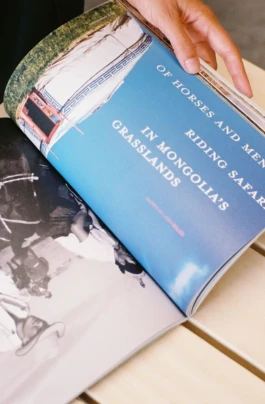
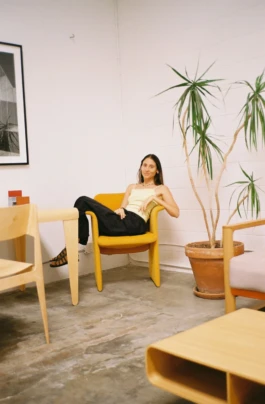
What’s the premise of Open Spaces magazine, and why did you decide to focus solely on print with a very specific distribution list?
I wanted Open Spaces to be a print magazine from the start. There’s something special about holding a physical magazine in your hands and savoring its tactile experience. I missed the days of handwritten notes and carrying books. The print process is slow and intentional, and I love the excitement that builds up in the team as we work on it. Open Spaces bridges the art world and the outdoors, exploring how nature inspires artists and how we experience travel and the outdoors through art and design.
What role do you see Open Spaces playing in the broader conversation about art, culture, and society?
I envision Open Spaces as a platform for human connection and storytelling. It’s a space for people who share similar interests to tell their stories or get inspired by stories or places. When someone says, “This is so Open Spaces,” it means they get what we’re trying to create and communicate.
What are some of your favorite Land Art projects?
I recently visited Tippet Rise Art Center in Montana, which is more of a sculpture park but designed with great attention to detail. You have to walk or bike to see the artworks, which I really enjoy. I’m also fascinated by the Land Art movement of the ’60s, including Robert Smithson’s Spiral Jetty, Nancy Holt’s Sun Tunnels, and lifelong projects like Michael Heizer’s City and James Turrell’s Roden Crater (which I hope to see someday!).
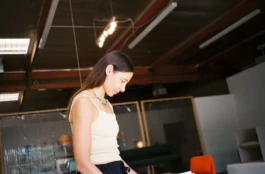
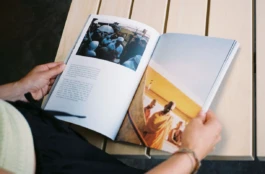
How does the magazine typically come together? I know you prefer not to have a theme and let the process unfold more organically, but you often end up with themes anyway!
I started without themes because I didn’t want to limit the topics we explored. But yes, themes often emerge as the content comes together, like a closing note. My editor’s note usually introduces the theme we’ve ended up with. I’m always brimming with ideas and spend time each morning jotting them down. From these musings and discussions with others, the magazine takes shape. I also love leaving room for unexpected additions if a great new opportunity arises. I guess I like to keep things open to surprises!
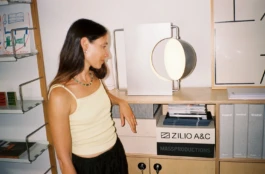
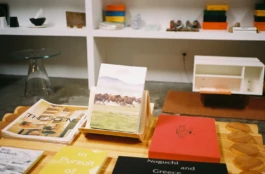
Skiing has played a major role in your life. Can you describe your relationship with the slopes?
I love the mountains, and backcountry skiing, in particular makes me feel incredibly free. The effort of hiking up the mountain is worth it when you find a pristine, untouched slope. It’s a magical feeling. The mountains remind me of nature’s power and how small we are in comparison. It just humbles you.
Also, the outdoors in general?
Even though I grew up in big cities, being outdoors brings me peace. I love the sound of water, whether it’s a river or the ocean. I spent four months in Nepal without a smartphone or internet, and all my stress just melted away. Nature’s grandeur always reminds me of something bigger than ourselves—almost a spiritual aspect.
“Nature’s grandeur always reminds me of something bigger than ourselves—almost a spiritual aspect.”
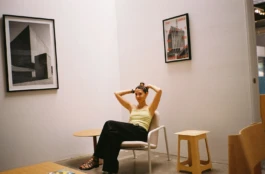

What’s on your playlist right now?
Ludovico Einaudi. His classical, instrumental music makes me dream and feel at peace.
Have you read any standout books lately?
This One Wild and Precious Life by Sarah Wilson and Freedom from the Known by Krishnamurti
If you could be transported anywhere right now, where would it be and why?
I’d head to Bhutan. I’ve always wanted to go, and it’s my big plan for my 40th birthday (not telling you when that is, hehe). It’s known as the “Happy Country,” and we could all use a bit more happiness these days, given how crazy the world is right now.
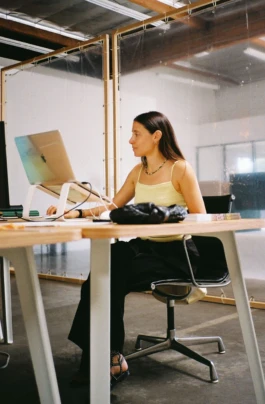

Open Spaces

Yara Akkari, originally from Lebanon, has blended her love for community, nature, and art into the world of publishing. From studying at the London School of Economics to starting Open Spaces magazine, Yara shares how her journey—including a decade in humanitarian work—drives her passion for bringing people together through creativity, storytelling, and Land Art, that ties the natural world to artistic expression.


You’re a Lebanon native, so what are some of your fondest childhood memories?
My childhood was all about food and community. You never leave the table hungry—it’s just part of our culture to keep feeding you! Even now that I live abroad, I love bringing people together around a meal and making my home as welcoming as the one I return to in Lebanon.
How did you find your time in London while studying at the London School of Economics?
It flew by in a blur, to be honest! I really enjoyed the subjects I studied, from human rights to humanitarian and development studies. It felt like exactly what I wanted to learn, and I’d definitely do it again if I could. Being in London was fantastic—at that age, you’re all about the parties, and London definitely delivers on that front!
Your initial background is in renewable energy, specifically in developing countries, which you pursued for over 10 years. What are some of the key takeaways from that experience?
Those years were formative for me. They sparked my curiosity and pushed me to take on challenges and explore new places. Working in countries like Haiti, Uganda, Kenya, Ethiopia and India, and having significant responsibilities at a young age, was incredible. It’s a bit nostalgic to think about, but starting Open Spaces feels like a new adventure—different yet equally thrilling.
“Working in countries like Haiti, Uganda, Kenya, Ethiopia and India, and having significant responsibilities at a young age, was incredible.”


What’s the premise of Open Spaces magazine, and why did you decide to focus solely on print with a very specific distribution list?
I wanted Open Spaces to be a print magazine from the start. There’s something special about holding a physical magazine in your hands and savoring its tactile experience. I missed the days of handwritten notes and carrying books. The print process is slow and intentional, and I love the excitement that builds up in the team as we work on it. Open Spaces bridges the art world and the outdoors, exploring how nature inspires artists and how we experience travel and the outdoors through art and design.
What role do you see Open Spaces playing in the broader conversation about art, culture, and society?
I envision Open Spaces as a platform for human connection and storytelling. It’s a space for people who share similar interests to tell their stories or get inspired by stories or places. When someone says, “This is so Open Spaces,” it means they get what we’re trying to create and communicate.
What are some of your favorite Land Art projects?
I recently visited Tippet Rise Art Center in Montana, which is more of a sculpture park but designed with great attention to detail. You have to walk or bike to see the artworks, which I really enjoy. I’m also fascinated by the Land Art movement of the ’60s, including Robert Smithson’s Spiral Jetty, Nancy Holt’s Sun Tunnels, and lifelong projects like Michael Heizer’s City and James Turrell’s Roden Crater (which I hope to see someday!).


How does the magazine typically come together? I know you prefer not to have a theme and let the process unfold more organically, but you often end up with themes anyway!
I started without themes because I didn’t want to limit the topics we explored. But yes, themes often emerge as the content comes together, like a closing note. My editor’s note usually introduces the theme we’ve ended up with. I’m always brimming with ideas and spend time each morning jotting them down. From these musings and discussions with others, the magazine takes shape. I also love leaving room for unexpected additions if a great new opportunity arises. I guess I like to keep things open to surprises!


Skiing has played a major role in your life. Can you describe your relationship with the slopes?
I love the mountains, and backcountry skiing, in particular makes me feel incredibly free. The effort of hiking up the mountain is worth it when you find a pristine, untouched slope. It’s a magical feeling. The mountains remind me of nature’s power and how small we are in comparison. It just humbles you.
Also, the outdoors in general?
Even though I grew up in big cities, being outdoors brings me peace. I love the sound of water, whether it’s a river or the ocean. I spent four months in Nepal without a smartphone or internet, and all my stress just melted away. Nature’s grandeur always reminds me of something bigger than ourselves—almost a spiritual aspect.
“Nature’s grandeur always reminds me of something bigger than ourselves—almost a spiritual aspect.”


What’s on your playlist right now?
Ludovico Einaudi. His classical, instrumental music makes me dream and feel at peace.
Have you read any standout books lately?
This One Wild and Precious Life by Sarah Wilson and Freedom from the Known by Krishnamurti
If you could be transported anywhere right now, where would it be and why?
I’d head to Bhutan. I’ve always wanted to go, and it’s my big plan for my 40th birthday (not telling you when that is, hehe). It’s known as the “Happy Country,” and we could all use a bit more happiness these days, given how crazy the world is right now.
